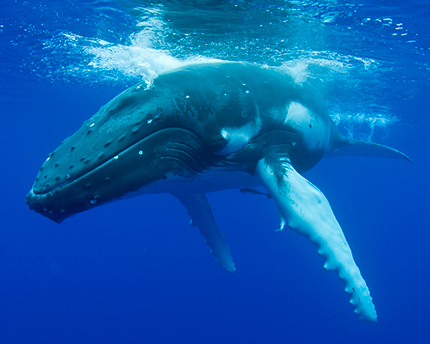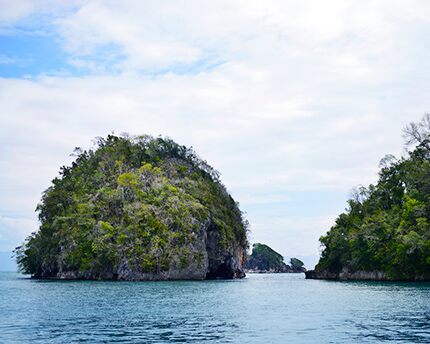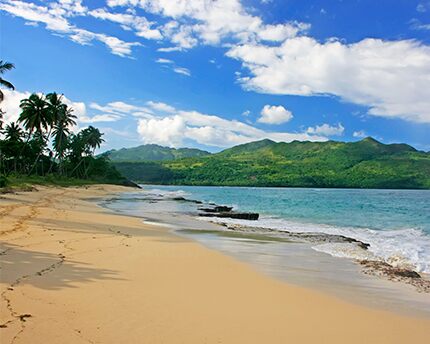The Dominican Republic’s northern region
The northern part of the Dominican Republic, known as El Cibao, is a rich territory in every sense of the word. From the mountains of Jarabacoa in the Cordillera Central [central mountain range] to Puerto Plata on the coast, and from Monte Cristi on the border with Haiti to the Bay of Samaná, this region is pure magic — with stunning views of the Atlantic thrown in for good measure.
A good point of departure for exploring the north of the country is its mountainous heart. In the heart of the Cordillera Central, places such as Bonao, Constanza and Jarabacoa offer wonderful experiences, very different from the more usual beach setting. Enjoy the Dominican Republic’s luxuriant natural landscape, visiting natural swimming pools and waterfalls, lush pine forests — yes, in the midst of the Caribbean! — coffee plantations and picturesque homesteads. Tour this spellbinding area on horseback — like a genuine native of Jarabacoa. And for the thrill-seeking visitor, there’s rafting, canyoning, abseiling, mountain biking and paragliding. The perfect destination!
Back on the road heading towards the northern coast, you can explore attractive towns such as La Vega with its colorful carnival, and Santiago de los Caballeros, the country’s original capital founded by Christopher Columbus in 1495. Located in the center of the Valle del Cibao, Santiago is the Dominican Republic’s second-largest city, and a place that tells, chapter by chapter, the rich history of the country. The Monument to the Heroes of the Restoration is the reference point of this city — historic, and at the same time, modern — and steeped in art and culture. In addition, in the fertile lands surrounding the capital one of the Dominican Republic’s most typical products is cultivated: tobacco.
Puerto Plata, known as “La Novia del Atlántico” [Bride of the Atlantic], is the most important city on the northern coast, and could be described as the “birthplace” of tourism in the Dominican Republic. Its small bay, (presided over by a former fortress, the Fortaleza de San Felipe), witnessed the arrival of Columbus in 1492 and was, during the early colonial years, the island’s main port. Crowned by the Loma Isabel de Torres (a mountain with an altitude of almost 800 meters, which you can ascend in the Caribbean’s only cable car), Puerto Plata’s many attractions include its charming Victorian architecture, a vibrant night life and its delicious cuisine.
Apart from its urban beaches, such as Long Beach and Playa Acapulco, Puerto Plata is also the starting point for discovering the wonderful beaches of the northern coast. Over towards the east, Playa Dorada, Sosúa y Cabarete, Sosúa and Cabarete offer options to suit all tastes. Playa Dorada, hemmed in by reefs, is the perfect beach for families, while the calm waters of the little bay of Sosúa are ideal for snorkelling and other water sports — or for simply relaxing on the beach. Cabarete is an absolute “must” for enthusiasts of kitesurfing and other extreme water sports.
Continuing eastwards from Puerto Plata brings you to the Samaná Peninsula, a natural paradise combining virgin beaches, tiny villages and charming towns, ancient caves decorated with prehistoric paintings created by the Tainos, dense tropical rainforests, rivers and waterfalls with crystal-clear waters, and much more. From Santa Bárbara de Samaná, the area’s main town, you can explore the enormous wealth of the Los Haitises National Park or watch one of the Dominican Republic’s most thrilling natural spectacles: the annual visit to the Bay of Samaná of hundreds of humpback whales.
From Puerto Plata, the northern coast also stretches as far as Monte Cristi on the border with Haiti. On this section of the Dominican Republic’s coastline, you can also find breath-takingly beautiful beaches such as Playa Grande, Bahía de Maimón and Playa Guzmancito, as well as the impressive Bahía de Luperón — surrounded by mangrove forests — and Cayo Arena, a tiny, sandy islet set among reefs. Nor should you miss the area’s cultural treasures (including historic La Isabela, the first settlement founded by the Spanish in the New World in 1494), or natural wonders such as the Monte Cristi National Park, with its stunning beaches set within limestone cliffs, its mangrove forests and its great coral reef — the largest and best preserved coral reef in the country.
Nearby plans
Related plans

Humpback Whale Sanctuary in Samaná: nature in its purest form
Visit the Humpback Whale Sanctuary in Samaná and learn about these underwater giants that weigh more than 30 tons. The ultimate nature experience!

The Los Haitises National Park: a spectacular natural landscape
Skirted by the Bay of Samaná, the Los Haitises National Park is a spectacular natural landscape and the perfect place to experience the adventure of a lifetime.

Things to know before visiting the Dominican Republic
The Dominican Republic is one of the most popular tourist destinations that everyone should visit. It is well organized to ensure the safety and well-being of tourists, but visitors should keep certain things in mind to ensure the perfect vacation.


